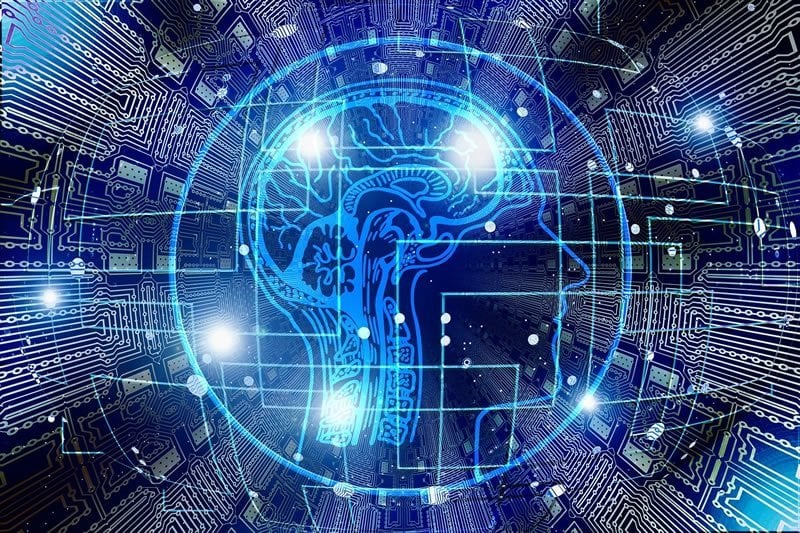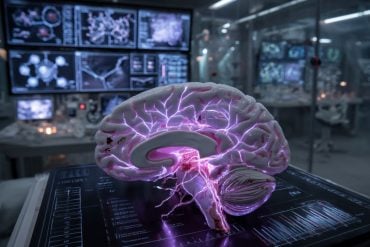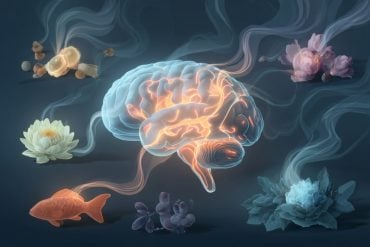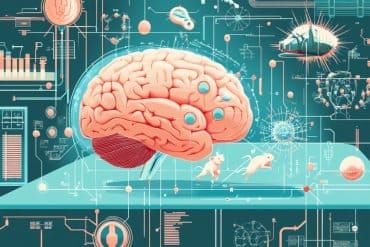Summary: Researchers were able to restore the sense of touch to a 28-year-old who suffered a spinal cord injury with the help of new brain-computer interface technology.
Source: Cell Press
While we might often take our sense of touch for granted, for researchers developing technologies to restore limb function in people paralyzed due to spinal cord injury or disease, re-establishing the sense of touch is an essential part of the process. And on April 23 in the journal Cell, a team of researchers at Battelle and the Ohio State University Wexner Medical Center report that they have been able to restore sensation to the hand of a research participant with a severe spinal cord injury using a brain-computer interface (BCI) system. The technology harnesses neural signals that are so miniscule they can’t be perceived and enhances them via artificial sensory feedback sent back to the participant, resulting in greatly enriched motor function.
“We’re taking subperceptual touch events and boosting them into conscious perception,” says first author Patrick Ganzer, a principal research scientist at Battelle. “When we did this, we saw several functional improvements. It was a big eureka moment when we first restored the participant’s sense of touch.”
The participant in this study is Ian Burkhart, a 28-year-old man who suffered a spinal cord injury during a diving accident in 2010. Since 2014, Burkhart has been working with investigators on a project called NeuroLife that aims to restore function to his right arm. The device they have developed works through a system of electrodes on his skin and a small computer chip implanted in his motor cortex. This setup, which uses wires to route movement signals from the brain to the muscles, bypassing his spinal cord injury, gives Burkhart enough control over his arm and hand to lift a coffee mug, swipe a credit card, and play Guitar Hero.
“Until now, at times Ian has felt like his hand was foreign due to lack of sensory feedback,” Ganzer says. “He also has trouble with controlling his hand unless he is watching his movements closely. This requires a lot of concentration and makes simple multitasking like drinking a soda while watching TV almost impossible.”
The investigators found that although Burkhart had almost no sensation in his hand, when they stimulated his skin, a neural signal–so small it was his brain was unable to perceive it–was still getting to his brain. Ganzer explains that even in people like Burkhart who have what is considered a “clinically complete” spinal cord injury, there are almost always a few wisps of nerve fiber that remain intact. The Cell paper explains how they were able to boost these signals to the level where the brain would respond.
The subperceptual touch signals were artificially sent back to Burkhart using haptic feedback. Common examples of haptic feedback are the vibration from a mobile phone or game controller that lets the user feel that something is working. The new system allows the subperceptual touch signals coming from Burkhart’s skin to travel back to his brain through artificial haptic feedback that he can perceive.

The advances in the BCI system led to three important improvements. They enable Burkhart to reliably detect something by touch alone: in the future, this may be used to find and pick up an object without being able to see it. The system also is the first BCI that allows for restoration of movement and touch at once, and this ability to experience enhanced touch during movement gives him a greater sense of control and lets him to do things more quickly. Finally, these improvements allow the BCI system to sense how much pressure to use when handling an object or picking something up–for example, using a light touch when picking up a fragile object like a Styrofoam cup but a firmer grip when picking up something heavy.
The investigators’ long-term goal is to develop a BCI system that works as well in the home as it does in the laboratory. They are working on creating a next-generation sleeve containing the required electrodes and sensors that could be easily put on and taken off. They also aim to develop a system that can be controlled with a tablet rather than a computer, making it smaller and more portable.
“It has been amazing to see the possibilities of sensory information coming from a device that was originally created to only allow me to control my hand in a one-way direction,” Burkhart says.
Funding: This study was supported by Battelle Memorial Institute and The Ohio State University Center for Neuromodulation.
About this neuroscience research article
Source:
Cell Press
Media Contacts:
Carly Britton – Cell Press
Image Source:
The image is in the public domain.
Original Research: Closed access
“Restoring the Sense of Touch Using a Sensorimotor Demultiplexing Neural Interface”. by Patrick Ganzer et al.
Cell doi:10.1016/j.cell.2020.03.054
Abstract
Restoring the Sense of Touch Using a Sensorimotor Demultiplexing Neural Interface
Highlights
• Following spinal cord injury, subperceptual touch signals affect the human motor cortex
• A brain-computer interface uses subperceptual signals to restore the sense of touch
• Sensorimotor function is further enhanced using demultiplexed sensorimotor signals
• Touch-regulated grip force can automate movement cascades and grip reanimation
Summary
Paralyzed muscles can be reanimated following spinal cord injury (SCI) using a brain-computer interface (BCI) to enhance motor function alone. Importantly, the sense of touch is a key component of motor function. Here, we demonstrate that a human participant with a clinically complete SCI can use a BCI to simultaneously reanimate both motor function and the sense of touch, leveraging residual touch signaling from his own hand. In the primary motor cortex (M1), residual subperceptual hand touch signals are simultaneously demultiplexed from ongoing efferent motor intention, enabling intracortically controlled closed-loop sensory feedback. Using the closed-loop demultiplexing BCI almost fully restored the ability to detect object touch and significantly improved several sensorimotor functions. Afferent grip-intensity levels are also decoded from M1, enabling grip reanimation regulated by touch signaling. These results demonstrate that subperceptual neural signals can be decoded from the cortex and transformed into conscious perception, significantly augmenting function.
Feel Free To Share This Neurotech News.






